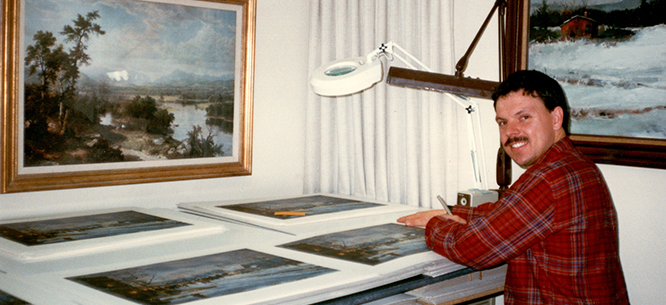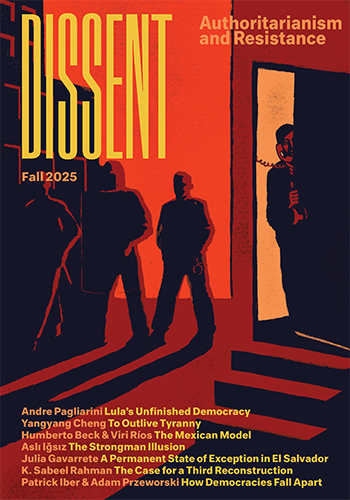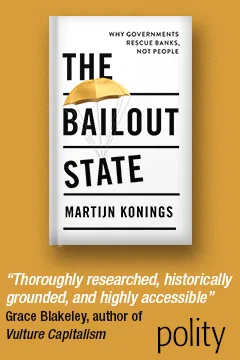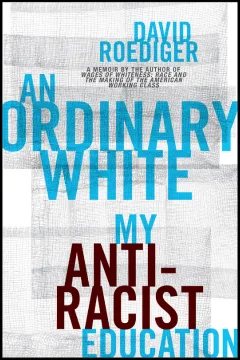The Painter of the Right
The Painter of the Right
Thomas Kinkade’s paintings show conservatives a world they have already won.

In early July, the Department of Homeland Security indulged in a little art appreciation on X, where it posted a Thomas Kinkade painting, Morning Pledge, for its 2.6 million followers to admire. Morning Pledge is archetypal Kinkade: an American flag waves proudly next to a quaint schoolhouse across the road from a row of Victorian-style homes. “Protect the homeland,” the DHS caption read. Days earlier the account had posted an AI-generated image of alligators wearing ICE hats as they patrolled outside a prison, a reference to the internment camp it recently built in a Florida swamp. The implications are not subtle: DHS must purge our streets so children can walk to school again. The America depicted in Morning Pledge cannot exist without Alligator Alcatraz.
Morning Pledge is a fantasy, but we’ve been living in Kinkade’s country for a long time. Mention the artist to anyone who attended an Evangelical church in the 1990s, and they’ll nod—or shudder—in recognition. You could find the man’s art everywhere, on framed prints, decorative plates, or Bible covers. As a child, Kinkade saturated my world. I did not think of him as a person. He was a fact, like the blue carpet in our church sanctuary. Yet my parents despised him, and still do. When I told my mother that I planned to watch Art for Everybody, a new documentary about Kinkade’s life and work, she demanded to know why. My parents are born again Christians, but they’re also classically trained musicians. To them, art is Mozart, Bach, and Mahler. Some busybody once asked my father why he didn’t play Christian music, and the question still aggravates him. “Handel’s Messiah is Christian music,” he says.
In the 1990s, Kinkade estimated that one in twenty American homes owned a piece of his art, and reports suggest that his company boasted around 350 franchised galleries at the peak of his popularity. Consumers who could not afford a Kinkade print could purchase Kinkade-branded Christmas ornaments or calendars. By the end of 2001, families could even move into a Kinkade-themed subdivision near Vallejo, California.
Kinkade’s most famous subject was the humble cottage, lit from within by unsettling candlelight. Former Evangelicals may also recall the Bridge of Hope, which spans a creek and heads nowhere. A white dogwood tree stands nearby, a “symbol of the purity of God’s grace,” according to the Kinkade company’s website. Kinkade created a world that some people, maybe even millions of people, wanted to inhabit. Though he was a Christian and his work often contained religious imagery, his art did not proselytize so much as it advertised an alternative reality where proselytization was no longer necessary. In Kinkade-land, everything is serene. There is cohesion. Grandmothers love his pink skies and cobblestone paths. Even today I can close my eyes and imagine a Kinkade abode, squatting underneath some eldritch sunset. A Kinkade landscape is often lifeless. There are few human beings, and fewer complications. Sometimes Jesus appears; other times he is more of a suggestion. Sometimes the paintings light up, literally, as if the artist wanted to burn holes in our retinas.
Kinkade called himself the Painter of Light, but Art for Everybody finds the darkness in his life. Relatives recount that when he was four, he watched his grandfather beat a bird to death. His mother fled his violent father with her children in tow, and the pair divorced. There was little money. Kinkade and his siblings regularly “came home to an old dark house,” his brother told filmmaker Miranda Yousef, an experience that may have marked him for the rest of his life. A college girlfriend remembers radical mood swings and controlling behavior that ended their relationship. After he transferred from the University of California at Berkeley to the ArtCenter College of Design in Pasadena, he saw the face of Jesus in his studio, and that vision set the course of his life. He married, had children, and painted sweet landscapes that soon turned garish.
By the time Kinkade died in 2012 at the young age of fifty-four, he had become a national joke for his behavior as much as his kitsch. The art world had always disdained him, and Christians had begun to abandon him. For one thing, he liked to piss in places where no one should piss. In 2008, the Los Angeles Times reported that he had “urinated on a Winnie the Pooh figure” outside the Disneyland Hotel in Anaheim. “This one’s for you, Walt,” he said. His own gallery owners sued him, claiming that he had used their faith to manipulate them into opening stores that would inevitably fail. He was arrested for drunk driving and filed for bankruptcy. By the time he died of an overdose of alcohol and Valium, he had become such a nonentity that I barely registered his end. Barack Obama was president, I had left the church, and the facts seemed simple enough. Here lies one more hypocrite, felled by his vices. Maybe his Christianity—so gauche, so shallow—would disappear, too.
That liberal heyday was fragile, and now it’s over. The same people who made Kinkade a millionaire helped make Donald Trump a two-time president, and Art for Everybody arrives in a moment shaped by authoritarian tastes. Kinkade’s variations on kitsch merely hinted at a world of Christian dominance, but today’s authoritarian art is less subtle, and even gaudier than the average Kinkade. DHS is not the only official government account to post AI slop on X; Trump himself once posted an AI-generated image of himself as the pope. Trump is covering the Oval Office in gilded finishings and has replaced a portrait of Obama with a portrait of himself—the first time a sitting president has hung his own portrait in the White House—with his fist raised after a failed assassination attempt. He has placed his cronies in charge of the Kennedy Center in Washington, D.C. and added two Fox News hosts to its board of trustees. Groypers and White House social media accounts post cozy AI-generated images of Trump and Vance.
The writer Mitch Therieau has called this trend “agit-slop.” In the Drift, he argued that “the ambient smear of right-wing art expresses a wish for a warm cocoon protecting the viewer from the carnage he longs for.” Kinkade’s cottages look even more sinister now. Commercial success made Kinkade a cultural phenomenon in his own right; it also encouraged him to strike a bargain. He took whatever creative process he had once employed and exchanged it for profit. The average Kinkade cottage was a mass-produced commodity, and it took hardly more effort to generate than today’s agit-slop. And even if the Bridge of Hope is a bit less blunt than alligators in ICE hats, Kinkade’s work is inescapably ideological. The point of a Kinkade painting is to comfort, and to quell any uncertainty, which makes it art for strongmen and the crowds they attract.
In one sense, Kinkade got lucky. He started working in the 1980s, as the modern Christian right took shape and sought to flex its muscles. We had always had our own colleges and radio stations and television programs, but it was no longer enough. Relevance is a kind of power, and we wanted to be cool. That was a problem the free market could solve. Abstinence needed to be sexy, somehow, which meant it needed a marketing campaign or, even better, some associated jewelry. We got graphic tees and pop music and romance novels. A good Christian must be a good consumer and wage culture war through purchasing power; the right product would not only guard a heart from Satan but spread the gospel to the world. Faith without works is dead.
Kinkade is not responsible for the materialism of the 1980s and 1990s, but he was a creature of the era. In Art for Everybody, we learn that he wanted “to eat”—he didn’t want to live and die impoverished like Van Gogh. His wife says that he sought to make his art “accessible” to families who couldn’t afford more sophisticated work. But what made his art so popular?
When the Christian rock band DC Talk released Jesus Freak in 1995, the group sold over 85,000 copies in its first week—a remarkable feat in Christian contemporary music at the time. The album owed its success in part to its lead single, a uniquely terrible song (it includes the lyrics “I saw a man with a tat on his big fat belly / It wiggled around like marmalade jelly”), which told Christians they would be persecuted for their faith. But Kinkade’s paintings showed Christians a world they had already won. They could look at one of his cottages and retreat into fantasy. American flags waft in the breeze, and nobody has any neighbors. When Kinkade did paint street scenes, the crowds appeared white. His imaginary 1950s, without immigration or the civil rights movement, was where millions of people wanted to live long before MAGA.
In the 2000s, a professor at my Evangelical college affirmed what I had already learned at home: Kinkade’s art was bad art, and culture did not have to be the enemy of faith. My Christian parents could tell you that musical proficiency is about more than technical skill; a good performance requires something of those who perform it and those who perceive it. You step outside yourself and return changed, and maybe that can please God, too. Now they have retired, that class was a long time ago, and Kinkade is winning the argument.
Art for Everybody contains a twist: Kinkade built a vault in his home and filled it with work he never sold or displayed. Much of the art is surreal, almost messy, marked by unsettling auras and a mysterious orb. In one painting, a nun stares down a rifle. The work showed real promise, thwarted by the artist and those he chose to flatter. All that’s left is the carnage.
Sarah Jones is a senior writer for New York Magazine, where she covers politics and religion. Her first book, Disposable: America’s Contempt for the Underclass, is out now from Avid Reader Press.






